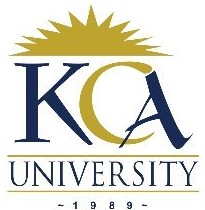 UNIVERSITY EXAMINATIONS: 2016/2017
UNIVERSITY EXAMINATIONS: 2016/2017
EXAMINATION FOR THE DIPLOMA IN BUSINESS INFORMATION
TECHNOLOGY DIPLOMA IN INFORMATION TECHNOLOGY
DBIT403 DIT301 OPERATING SYSTEMS
DATE: AUGUST, 2017 TIME: 2 HOURS
INSTRUCTIONS: Answer Question One & ANY OTHER TWO questions.
QUESTION ONE [30 MARKS] – COMPULSORY
(a)Write DOS commands that would carry out the following activities: – [3 Marks]
(i) Display all directories in drive C
(ii) Create a directory named Software in drive C
(iii)Rename a directory named DIT to DBIT
(b) (i) List and explain the functions of four utility programs that are part of the operating
system [4 Marks]
(ii) Enumerate four examples of operating systems which are common in the market
[4 Marks]
(c)Explain the following types of operating systems: – [6 Marks]
(i) Single user single task operating systems
(ii) Real time operating systems
(iii)Network operating systems (NOS)
(d)Study the following algorithm of current memory requests by two processes and answer
the questions that follow:-
Time Process 1 Process 2
T1 No request No request
T2 Request and hold 80KB Request and hold 70KB
T3 No request No request
T4 Request 110 KB Request 120KB
Required:-Assuming a total of 250KB are available for allocation:-
(i) Identify the most probable time at which a deadlock may occur. Justify your answer
[2 Marks]
(ii) Suggest two ways of avoiding the deadlock. [2 Marks]
(e)State four requirements of memory management in respect to operating systems [4 Marks]
(d) List and explain any five functions of a computer operating system [5 Marks]
QUESTION TWO [20 MARKS]
(a)Explain the following I/O techniques giving an example in each case:
(i) Buffering [3 Marks]
(ii) Caching [3 Marks]
(b)Describe three file management activities supported by an operating system [6 Marks]
(c)With the aid of a diagram, describe the location of the three types of schedulers in a five
state process model [8 Marks]
QUESTION THREE [20 MARKS]
(a)With the aid of diagrams, describe the following memory management techniques:-
(i) Paging [4 Marks]
(ii) Segmenting [4 Marks]
(b) James a network administrator at KCA University wants to buy an operating system to
use for configuring and setting up the KCAU network server. Explain four factors he would
consider while buying the operating system [8 Marks]
(c) State four objectives of the Input/output device manager [4 Marks]
QUESTION FOUR [20 MARKS]
(a)Distinguish between the following terms as applied in operating systems: – [6 Marks]
(i) Multiprocessing & multiprogramming
(ii) Graphical user interface & command driven interface
(iii)Response time & turnaround time
(b) Giving appropriate examples, differentiate between pre-emptive and non-pre-emptive
policies as used in process scheduling [4 Marks]
(c) Explain the following terms as used in operating systems: – [6 Marks]
(i) Thread
(ii) Internal fragmentation
(iii)Open source software
(d) Outline four causes of computer interrupts [4 Marks]
QUESTION FIVE [20 MARKS]
(a) (i)Describe the following process scheduling polies:-
a) FIFO [4 Marks]
b) Round robin [4 Marks]
(ii) State four objectives of process scheduling as used in operating systems [3 Marks]
(b)Explain each of the following terms as used in inter-process communication: [4 Marks]
(i) Livelock
(ii) Starvation
(c) Giving examples, distinguish between open source and closed source software’s
[4 Marks]
